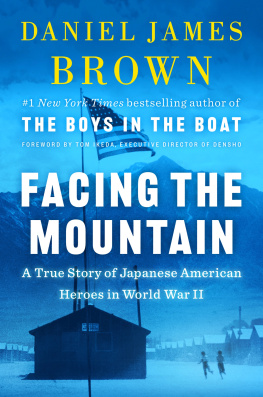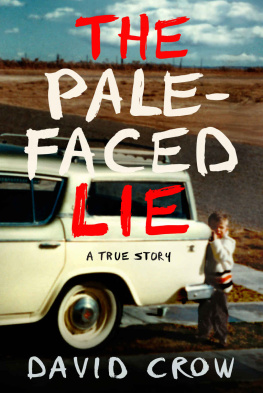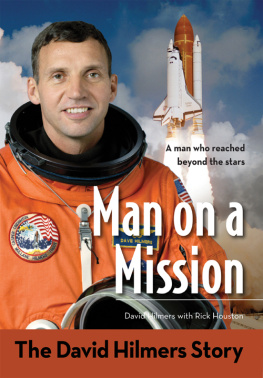David W. Brown - The Mission: A True Story
Here you can read online David W. Brown - The Mission: A True Story full text of the book (entire story) in english for free. Download pdf and epub, get meaning, cover and reviews about this ebook. year: 2020, publisher: Custom House, genre: Non-fiction. Description of the work, (preface) as well as reviews are available. Best literature library LitArk.com created for fans of good reading and offers a wide selection of genres:
Romance novel
Science fiction
Adventure
Detective
Science
History
Home and family
Prose
Art
Politics
Computer
Non-fiction
Religion
Business
Children
Humor
Choose a favorite category and find really read worthwhile books. Enjoy immersion in the world of imagination, feel the emotions of the characters or learn something new for yourself, make an fascinating discovery.
- Book:The Mission: A True Story
- Author:
- Publisher:Custom House
- Genre:
- Year:2020
- Rating:4 / 5
- Favourites:Add to favourites
- Your mark:
- 80
- 1
- 2
- 3
- 4
- 5
The Mission: A True Story: summary, description and annotation
We offer to read an annotation, description, summary or preface (depends on what the author of the book "The Mission: A True Story" wrote himself). If you haven't found the necessary information about the book — write in the comments, we will try to find it.
The Mission: A True Story — read online for free the complete book (whole text) full work
Below is the text of the book, divided by pages. System saving the place of the last page read, allows you to conveniently read the book "The Mission: A True Story" online for free, without having to search again every time where you left off. Put a bookmark, and you can go to the page where you finished reading at any time.
Font size:
Interval:
Bookmark:
or:How a Disciple of Carl Sagan, an ExMotocross Racer, a Texas Tea Party Congressman, the Worlds Worst Typewriter Saleswoman, California Mountain People, and an Anonymous NASA Functionary Went to War with Mars, Survived an Insurgency at Saturn, Traded Blows with Washington, and Stole a Ride on an Alabama Moon Rocket to Send a Space Robot to Jupiter in Search of the Second Garden of Eden at the Bottom of an Alien Ocean Inside of an Ice World Called Europa(A True Story)
TO MY MOM ,
the first reader I ever knew
Beware, Diomeds! Forbear, Diomeds!
Do not try to put yourself on a level with the gods;
that is too high for a mans ambition.
ILIAD
Robert Pappalardo, a planetary scientist
Louise Prockter, a geomorphologist
Galileo, a spacecraft orbiting Jupiter from 1995 to 2003
Carl Sagan, an astrophysicist
| Viking 1 | } | Two Mars probes, 1976 to 1982 |
| Viking 2 |
Edward Weiler, the head of NASA science missions
Curt Niebur, a program scientist at NASA headquarters
Karla Clark, an engineer at Jet Propulsion Laboratory
Wernher von Braun, a rocket scientist
Daniel Goldin, the NASA administrator from 1992 to 2001
Pathfinder, a Mars rover mission in 1997
James Green, the head of planetary science at NASA
Fran Bagenal, a planetary scientist
Ralph Lorenz, a planetary scientist
Jonathan Lunine, a planetary scientist
Huygens, a probe that landed on Titan in 2004
Cassini, a spacecraft orbiting Saturn from 2004 to 2017
Susan Niebur, an astrophysicist
John Culberson, a U.S. congressman from Texas
Todd May, a materials engineer
Alan Stern, a planetary scientist and NASA science missions lead
MESSENGER, a spacecraft orbiting Mercury from 2011 to 2015
Mike Griffin, the NASA administrator from 2005 to 2009
Don Blankenship, a geophysicist
Ron Greeley, a geologist
Cynthia Greeley, a historian
Europa Orbiter, a spacecraft that never was, in 1999
JIMO, a Europa nuclear spacecraft that never was, in 2003
Europa Explorer, a spacecraft that never was, in 2007
Jupiter Europa Orbiter, a spacecraft that almost was, in 2010
Europa Clipper, a spacecraft that will orbit Jupiter
Mars Science Laboratory, a rover mission in 2012
Tom Gavin, an engineer
Dave Senske, a planetary scientist
| Spirit | } | Two Mars rovers, landed in 2004 |
| Opportunity |
Lori Garver, the deputy administrator of NASA from 2009 to 2013
Joan Salute, a program executive at NASA headquarters
Barry Goldstein, an engineer
Brian Cooke, an engineer
IT WASNT ENOUGH TO MAKE THE STYROFOAM SOLAR system over his bed. The boy needed toothpicks, too, for the moons, and he pressed them into each planet, none for Mercury or Venus, one for Earth, two for Mars. He puzzled over Jupiter, the dozen discovered being too many toothpicks, so he accounted only for the four found by Galileo in 1610. The moons were made of crumpled masking tape, which he skewered and placed into orbit. And while little Europa wasnt labeled or anything, it was with young Robert Pappalardo even then, on a two-inch wooden spike in a foam world of orange and red.
In 1970 Roberts dad packed the clan Pappalardo into the family car and steered south to Virginia, one long, continuous drive from Jericho, New York, on the north shore of Long Island, west through the city and then down along the coast. The trip ended on the Chesapeake Bay Bridge-Tunnel, which intersected the path of totality of a solar eclipse, the reason for the excursion. A total eclipse. A TOTAL SOLAR ECLIPSE. The sun blocked by the moon but for phantasmal arms of a shimmering corona, a black hole ripped in the daytime sky like some portal to another dimension, day turned to night for minutes and animals going crazy because what the hell is going on up there?but across only a spaghetti strand of the United States, everywhere not in the path experiencing a miserable and pathetic partial eclipse, the moon taking a bite from the sun but nothing else, the animals not even noticing.
Anyway and either way, he didnt get that lesson, young Robert, five at the time and not yet of the toothpick moons, the sedan seating only so many, and at some point, Bobwere sorry, really, and well make it up to youweve got to make a cut and, Bob, look, you would miss an awful lot of school for this trip and you love staying at your grandparents so what do you say? Well catch the next one? OK? OK.
Thirty-four years later, he thought of that, the eclipse, the craft store solar system, the masking tape Europa, when they offered him the moon from the ninth floor of NASA headquarters. Europa. It was discreet, but it was an offer. It happened between meetings on October 22, 2004. He was there that day on loan from the University of Colorado, where he was an assistant professor, to advise the agency on JIMOthe Jupiter Icy Moons Orbiterand what could be achieved from further expeditions to the Jovian worlds. Pappalardo was part of the missions science definition team, an ad hoc group of scientists who kneaded the knowns and knowledge gaps of a celestial object or system and determined the scientific objectives that should thus drive a prospective mission there. The simple ability to go somewhere started conversations, but before the National Aeronautics and Space Administration would pay engineers to spark blowtorches and build spaceships, there had to be a reason, some overriding and scientifically compelling purpose beyond Because Its There.
The Jupiter system was the destination, but Europa was the goal, the target, the quarry. Beneath the frozen moons granite-hard ice shell was a liquid saltwater ocean, long hypothesized If life existed anywhere else in the solar system, it was in that waterand not fossilized microbes like they scratched and sniffed for fruitlessly (and relentlessly) on Mars, but conceivably complex lifefish!and few causes could be more compelling.
Still, no way it would ever fly, JIMO.
Bob, began the furtive conversation, I hear that maybe youre not satisfied teaching.
WHEN PAPPALARDO WAS a child, astronauts worked and played on the moon. It was just normal, a thing people did, like work in a factory, bank, or bakery. They set up seismometers. They collected rocks. They explored this strange new world and encountered mystifying phenomena: spots of orange dirt on its plaster landscape, jarring flashes of light when they closed their eyes. Scientists on Earth solved these puzzles: the former formed by fire fountains in Lunas primordial past; Astronauts drove cars up there. They played golf. They brought mice with them. Pets! In space!
Bob was never going to be an astronautthat just wasnt in the cardsbut he was a child of Star Trek, and across five-year missions, Spock pointed the way in first run, and then in syndication, and then in animation (the Vulcan really drove the point home): science. During high school, Bob worked at Vanderbilt Planetarium in Centerport, Long Island, not far from his house. A few years later at Cornell University in Ithaca, he found the field of planetary science the way everyone else in the wider discipline did: through a Carl Sagan Moment. Upon enrolling, Bob had intended to take up the ancient art of astronomy, but problem the first: there was no astronomy major proper at Cornell; the field was taught under physics. Problem the second: physics. Bob therefore soon switched studies, his base camp now the universitys new geology building. Myriad mineralogy labs lined its hallways, and to study the stuff of the Earth was to spend long days and late nights in them, over big, binocular-type microscopes adorning tall black lab tables. Pappalardo was seated in one such lab on one such night behind one such microscope when another student, first name John, last name Berner, and so of course they called him Bunsen, walked in.
Font size:
Interval:
Bookmark:
Similar books «The Mission: A True Story»
Look at similar books to The Mission: A True Story. We have selected literature similar in name and meaning in the hope of providing readers with more options to find new, interesting, not yet read works.
Discussion, reviews of the book The Mission: A True Story and just readers' own opinions. Leave your comments, write what you think about the work, its meaning or the main characters. Specify what exactly you liked and what you didn't like, and why you think so.












